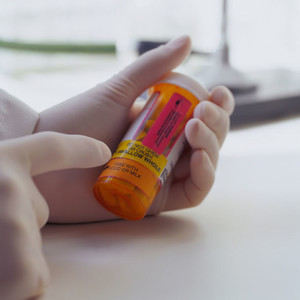In a mini review, author a Roy G Beran discusses what is the relevance of a narrow therapeutic index (NTI) to the treatment of epilepsy [1].
Anti-seizure medications (ASMs) control approximately two thirds of seizures in people with epilepsy (PWE) [2], confirming that ASMs still require considerable expertise [3] to manage appropriate dosing, with a stable regime, devoid of unnecessary fluctuations, especially once stability and seizure freedom has been achieved.
The narrow therapeutic index (NTI) of ASMs, is of significance when treating PWE, who comprise approximately 2% of the population [4]. Some ASMs have more than 10 generic alternatives and the problem arises when substituting one generic formulation for another. As already demonstrated, this may either double or halve the available active ingredients [5] with potentially serious consequences for vulnerable PWE. A way to protect, against such generic substitution, is to prescribe using the ‘trade’ name of the ASM even if prescribing a generic alternative [6]. Use of the trade name is still allowed in Australia, even when using electronic prescriptions, as long as the generic constituents are also named within the prescription [7, 8].
Australian pharmacists often advocate generic substitution because of financial gain, rather than specific consideration of the patient’s needs [9]. The Australian Pharmaceutic Benefits Scheme has encouraged generic substitution of originator medicines [10] and, from December 1994, pharmacists had the option of generic substitution [11], raising considerable concern within the Australian Medical Association [11]. Then in 2017, the prescribing software for doctors was changed to make prescribing by active ingredient the default and effectively make generics prescribing mandatory [12]. Treating physicians retain the option to prohibit brand-name substitution when writing a prescription, but respect for this authority is far from universal [13], with some pharmacists totally ignoring this directive from the treating/prescribing doctor [13]. This has the potential to adversely affect PWE because of significant alterations in the bioavailability.
Often such criticisms are viewed as being hypothetical but that is far from the facts, as one case clearly shows. A patient admitted to hospital was automatically given the generic alternative of her usual ASM, as was included in the hospital formulary, and without her knowledge or consent. This resulted in halving the therapeutic blood levels of her ASM and causing her to experience break through seizures, after years of stable seizure control [14]. The patient was neither driving nor handling machinery, at the time of the seizure, but that was a case of good luck, rather than good management. Had she been injured in any way, as a result of the generic substitution, without advice nor consent, the hospital may well have been the subject of litigation due to negligence and failure to provide adequate warning of the risks of substitution [6].
The author therefore concludes that generic substitution requires advice and the patient’s consent. Prescribing, using trade names, may avoid brand-name substitution.
Conflict of interest
The author of the research paper [1] declared that there was no conflict of interest.
Abstracted by Professor Roy G Beran, Neurology Department, Liverpool Hospital, Liverpool, Australia.
Related articles
What is the meaning of a narrow therapeutic index?
What is meant by a generic medication and generic equivalence?
Consequences of generics being favoured by healthcare providers
The cost of developing drugs and use of generics
Re-evaluation of the use of generics, especially when treating conditions such as epilepsy
| LATIN AMERICAN FORUM The new section of the ‘Latin American Forum’ on GaBI has been launched. The objective of this new section is to provide you with all the latest news and updates on developments of generic and biosimilar medicines in Latin America in Spanish. View last week’s headline article: Estado actual de los biosimilares de anticuerpos monoclonales aprobados en América Latina Browse the news in the Latin American Forum! Register to receive the GaBI Latin American Forum newsletter. Inform colleagues and friends of this new initiative. LATIN AMERICAN FORUM Se ha lanzado la nueva sección del ‘Foro Latinoamericano’ sobre GaBI. El objetivo de esta nueva sección es brindarle las últimas noticias y actualizaciones sobre desarrollos de medicamentos genéricos y biosimilares en América Latina en español. Vea el artículo principal de la semana pasada: Estado actual de los biosimilares de anticuerpos monoclonales aprobados en América Latina !Explore las noticias en el Foro Latinoamericano! Regístrese para recibir el boletín informativo GaBI Foro Latinoamericano. Informe a colegas y amigos sobre esta nueva iniciativa.
|
References
1. Beran RG. Generic substitution in patients whose illness has a narrow therapeutic index, such as epilepsy. APHE. 2020;1(2):1-5.
2. Löscher W. Current status and future directions in the pharmacotherapy of epilepsy. Trends Pharmacol Sci. 2002;23(3):113 8.
3. French JA, Kanner AM, Bautista J, et al. Efficacy and tolerability of the new antiepileptic drugs II: treatment of refractory epilepsy: report of the Therapeutics and Technology Assessment Subcommittee and Quality Standards Subcommittee of the American Academy of Neurology and the American Epilepsy Society. Neurology. 2004;62(8):1261-73.
4. Beran R G, Hall L, Michelazzi J. An accurate assessment of the prevalence ratio of epilepsy adequately adjusted by influencing factors. Neuroepidemiology. 1985;4(2):71-81.
5. Crawford P, Feely M, Guberman A, Kramer G. Are there potential problems with generic substitution of antiepileptic drugs? A review of issues. Seizure. 2006;15(3):165-76.
6. Beran RG. Generic substitution and advice to patients – potential legal consequences – From A (Australia) to U (United Kingdom or United States of America). Seizure. 2021;91:515-9.
7. The Pharmacy Guild of Australia. Electronic prescriptions – ePrescriptions update - 7 December 2020 [homepage on the Internet]. [cited 2022 Jul 1]. Available from: www.guild.org.au/guild-branches/nsw/guild-clinical/electronic-prescriptions
8. Australian Government Department of Health. Electronic Prescribing [homepage on the Internet]. [cited 2022 Jul 1]. Available from: www.health.gov.au/initiatives-and-programs/electronic-prescribing
9. Davey M. Pharmacists use loophole to boost profits. The Sydney Morning Herald 2012; 22 March 2012 - 3.00am [www.smh.com.au] Sydney, Australia: The Sydney Morning Herald; [cited 2022 Jul 1]. Available from: www.smh.com.au/healthcare/pharmacists-use-loophole-to-boost-profits-20120321-1vkea.html
10. Beecroft, G. Generic drug policy in Australia: a community pharmacy perspective. Aust New Zealand Health Policy. 2007;4, 7.
11. The Pharma Letter (1994) Generic substitution in Australia from December 1, 1994 [www.thepharmaletter.com] London, UK, The Pharma Letter; [cited 2022 Jul 1]. Available from: www.thepharmaletter.com/article/generic-substitution-in-australia-from-december-1 Accessed 21 February 2022
12. GaBI Online - Generics and Biosimilars Initiative. Concerns over change to generics prescribing in Australia [www.gabionline.net]. Mol, Belgium: ProPharma Communications International; [cited 2022 Jul 1]. Available from: www.gabionline.net/es/genericos/general/Concerns-over-change-to-generics-prescribing-in-Australia
13. Beran RG. Generic substitution in contravention of doctor’s prescriptions. Intern Med J. 2015;45(10):1093.
14. Manser D, Beran RG. Clinical letter: Brand substitution with generics – a potential mine field. Seizure. 2020;83:232-3.
Permission granted to reproduce for personal and non-commercial use only. All other reproduction, copy or reprinting of all or part of any ‘Content’ found on this website is strictly prohibited without the prior consent of the publisher. Contact the publisher to obtain permission before redistributing.
Copyright – Unless otherwise stated all contents of this website are © 2022 Pro Pharma Communications International. All Rights Reserved.








 0
0











Post your comment